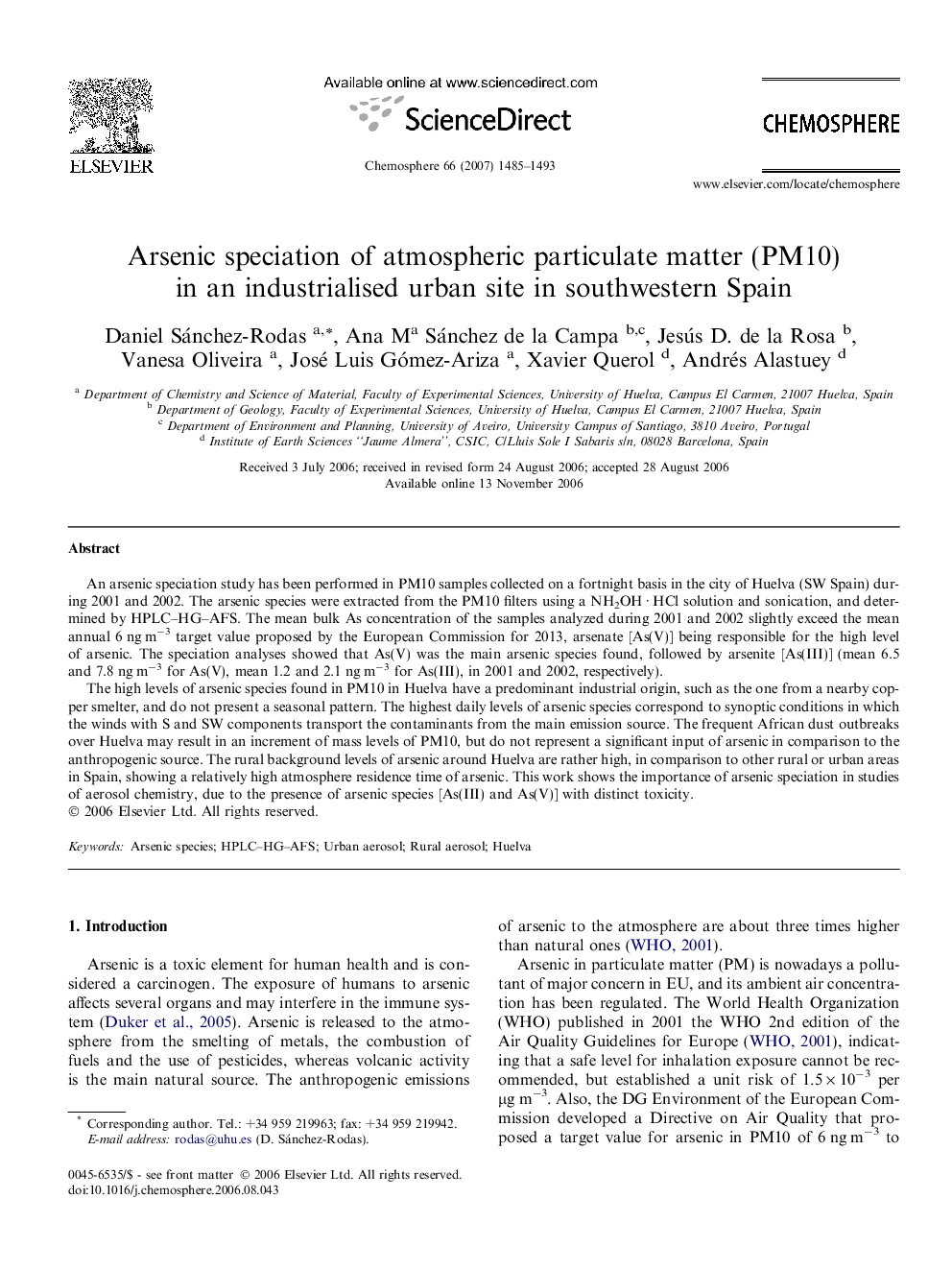| Article ID | Journal | Published Year | Pages | File Type |
|---|---|---|---|---|
| 4415187 | Chemosphere | 2007 | 9 Pages |
An arsenic speciation study has been performed in PM10 samples collected on a fortnight basis in the city of Huelva (SW Spain) during 2001 and 2002. The arsenic species were extracted from the PM10 filters using a NH2OH · HCl solution and sonication, and determined by HPLC–HG–AFS. The mean bulk As concentration of the samples analyzed during 2001 and 2002 slightly exceed the mean annual 6 ng m−3 target value proposed by the European Commission for 2013, arsenate [As(V)] being responsible for the high level of arsenic. The speciation analyses showed that As(V) was the main arsenic species found, followed by arsenite [As(III)] (mean 6.5 and 7.8 ng m−3 for As(V), mean 1.2 and 2.1 ng m−3 for As(III), in 2001 and 2002, respectively).The high levels of arsenic species found in PM10 in Huelva have a predominant industrial origin, such as the one from a nearby copper smelter, and do not present a seasonal pattern. The highest daily levels of arsenic species correspond to synoptic conditions in which the winds with S and SW components transport the contaminants from the main emission source. The frequent African dust outbreaks over Huelva may result in an increment of mass levels of PM10, but do not represent a significant input of arsenic in comparison to the anthropogenic source. The rural background levels of arsenic around Huelva are rather high, in comparison to other rural or urban areas in Spain, showing a relatively high atmosphere residence time of arsenic. This work shows the importance of arsenic speciation in studies of aerosol chemistry, due to the presence of arsenic species [As(III) and As(V)] with distinct toxicity.
